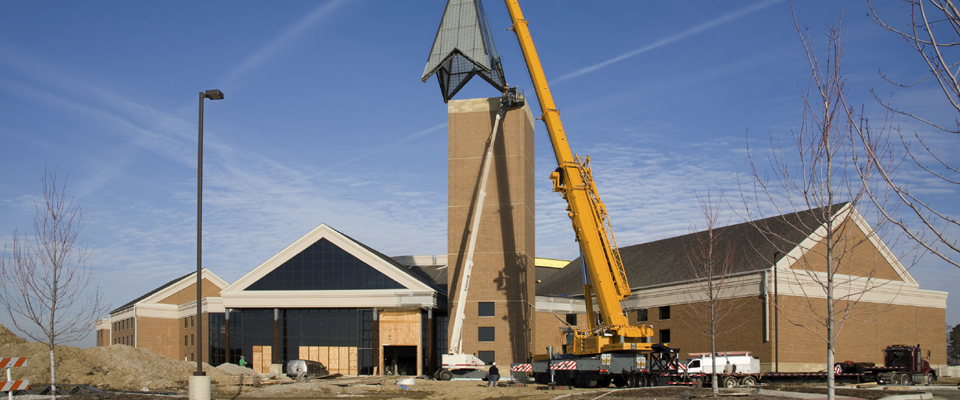Building from the ground up isn't your only option for church expansion. From car dealerships and movie theaters to grocery stores and fitness centers — buildings of all shapes and sizes are being repurposed as church facilities. As you determine the best strategy for your church, consider the following options and trends:
Cost of Building vs. Buying
One of the results of a down economy and depressed real estate market is an increased supply of vacant commercial buildings available to purchase. The price of existing square footage has dropped over the last few years. Conversely, the cost of new construction has risen as fuel, materials, labor, and insurance rates have increased. As a result, it may be cheaper to buy and remodel than it would be to build new. This is particularly true when you are looking for a non-customized, multi-purpose, marketable building. However, it's important not to make assumptions. Calculate all the costs when evaluating your options.
Future Expansion Potential
AGFinancial recently financed the purchase and remodel of an 18-plex movie theater for Calvary Church near Toledo, Ohio. They started by making alterations to some of the smaller theater rooms for nurseries, kids church, and classrooms. Although a theater is not a good fit for every church, it was the perfect facility for this one because it offered plenty of restrooms, public connection space, a built-in café, an ample parking lot that is well lit, and several rooms that can be remodeled and finished as the church continues to grow.
Stewardship
Saddleback Church grew to thousands meeting in non-traditional buildings. Pastor Rick Warren once mentioned that part of the church's conviction early on was a desire to avoid investing millions of dollars into a worship space that would sit empty 6 days a week. As you seek to be a good steward of your church facilities, factor in both current usage and future marketability of the space. A traditional church facility is often a single-purpose building that if/when outgrown, the market for that building is very limited, whereas a commercial or multi-purpose building may have a broader appeal.
Cool Factor
“Our church meets in _________.” Fill in the blank. There’s no doubt transforming a space to be used for the purpose of the Kingdom adds a new dimension to your facility. Pastor Matthew Barnett’s Dream Center in Los Angeles is housed in a former hospital built in the 1920’s. A church near Phoenix, Arizona, is currently remodeling a fitness center for its new facility. Repurposing can add character to your facility.
Design
Progressive styles that focus less on formality and more on durability are increasing in popularity. Stained concrete has replaced carpet. Utilitarian light fixtures have replaced more elaborate lighting features. Rather than implementing traditional church architecture, churches are seeking to create an inviting, coffee-shop feel that encourages personal relationships within the church.
Green Churches
Some churches are choosing to focus on sustainability by building an eco-friendly or “green” facility, incorporating LEED (Leadership in Energy and Environmental Design) principles into their building. Repurposing an existing facility is one eco-friendly approach. Another is to incorporate recycled or LEED certified materials into your construction project. If you are considering environmental factors as you plan your new facility, check with your local municipality to see if they offer incentives for a green facility.
Multi-Site Strategies
Existing buildings are an excellent option for multi-site churches. They allow a church to relocate or expand as the congregation grows and needs more space. Some multi-site churches build new, but normally within a specified model and targeted geographic area.
Closing Thoughts
Church expansion is an exciting journey. As you consider your building options, here is what I recommend:
- Be aware of local zoning and land use codes when purchasing property.
- Fulfill your due diligence with environmental and property inspections when purchasing land or existing buildings.
- Compare the cost of repurposing to building new.
- Discuss financing strategies with an experienced church lender when you first begin making plans.
If you have questions regarding your church's plans, feel free to email me at sfink@agfinancial.org or call 888.599.6015 to speak with a member of our team.
Did your church build new or repurpose an existing facility? What factors influenced your choice? Leave your comments below.



